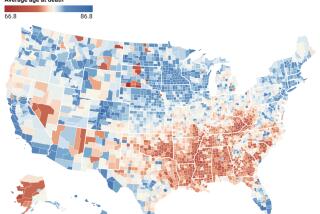Preterm births decline in U.S., but some states show high rates
The rate of preterm births has been getting better overall, but the U.S. still gets a “C” grade on the March of Dimes 2011 Premature Birth Report Card.
The report, issued Tuesday, shows that the country’s preterm birth rate has been decreasing since 2006, when it was 12.8%. In 2009 that rate was 12.2%, but still short of the March of Dimes’ goal of 9.6% by 2020.
Almost every state showed some improvement from 2006 to 2009, with 16 states receiving a grade of B (including California) and 19 states getting a C. Only one state got a coveted A grade—Vermont, which came in at 9.3%. Some states saw more than 10% improvement.
Three Southern states (Louisiana, Mississippi and Alabama) and Puerto Rico received an F and 11 states plus the District of Columbia got a D. Grades were based on how much the states’ preterm birth rates went over 9.6%.
The March of Dimes credits various health interventions for the better numbers, such as fewer elective, unneeded C-sections before the 39th week of pregnancy and the use of progesterone, which has been shown to help prevent preterm births. Other factors the organization said that also affect preterm births are smoking prevention, healthcare coverage, prenatal care and not having multiple births from fertility treatments. With preterm bith can come a number of health complications for babies, such as neurological, vision and hearing problems, plus respiratory difficulties.
“The three-year improvement in the U.S. preterm birth rate means that 40,000 more babies were given a healthy start in life and spared the risk of life-long health consequences of an early birth,” March of Dimes President Jennifer L. Howse in a news release. “It means that, nationwide, we saved at least $2 billion in health care and socioeconomic costs. Now we owe it to the other half a million infants who were born too soon to work together to give them the same chance.”
More to Read
Sign up for Essential California
The most important California stories and recommendations in your inbox every morning.
You may occasionally receive promotional content from the Los Angeles Times.










